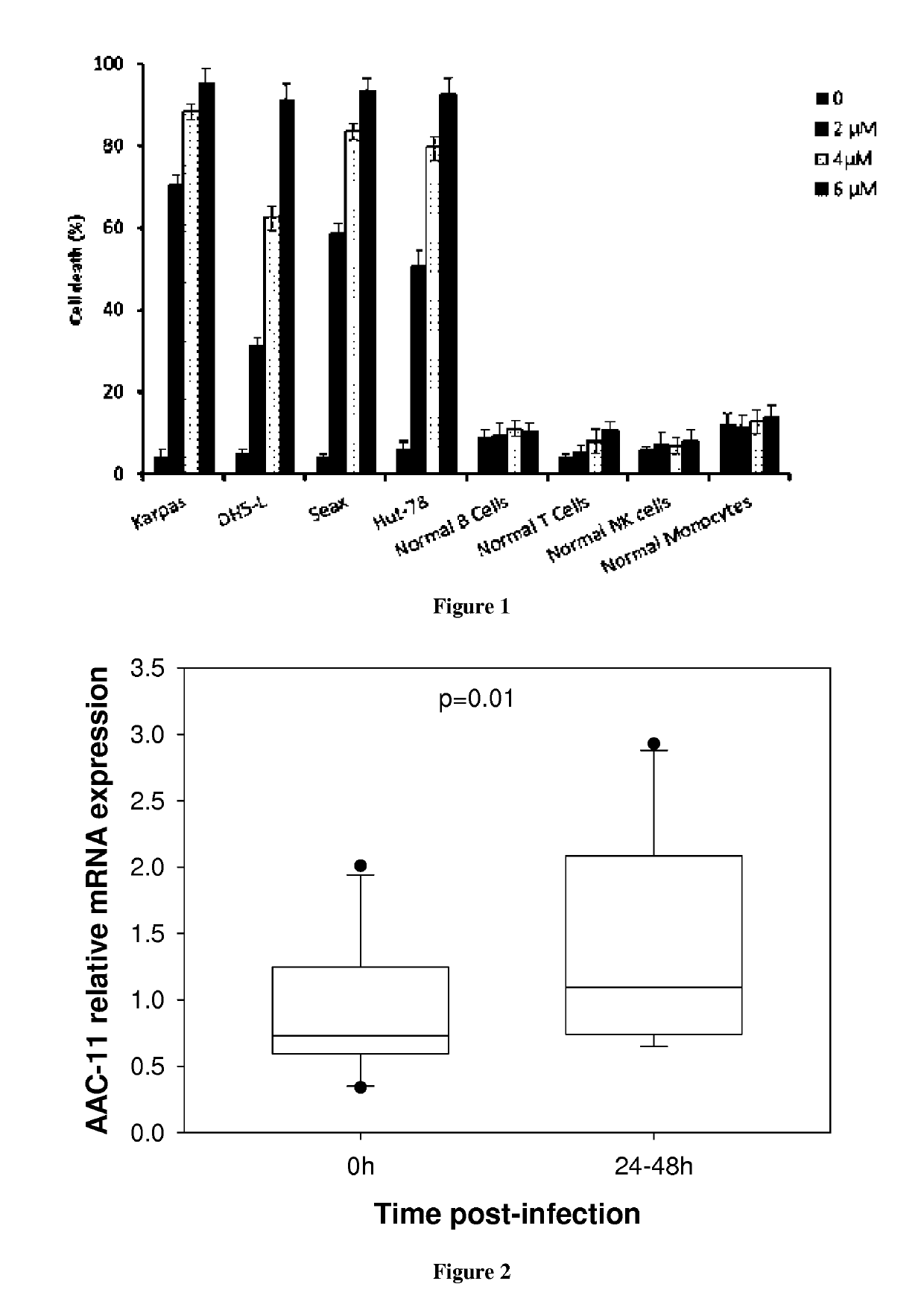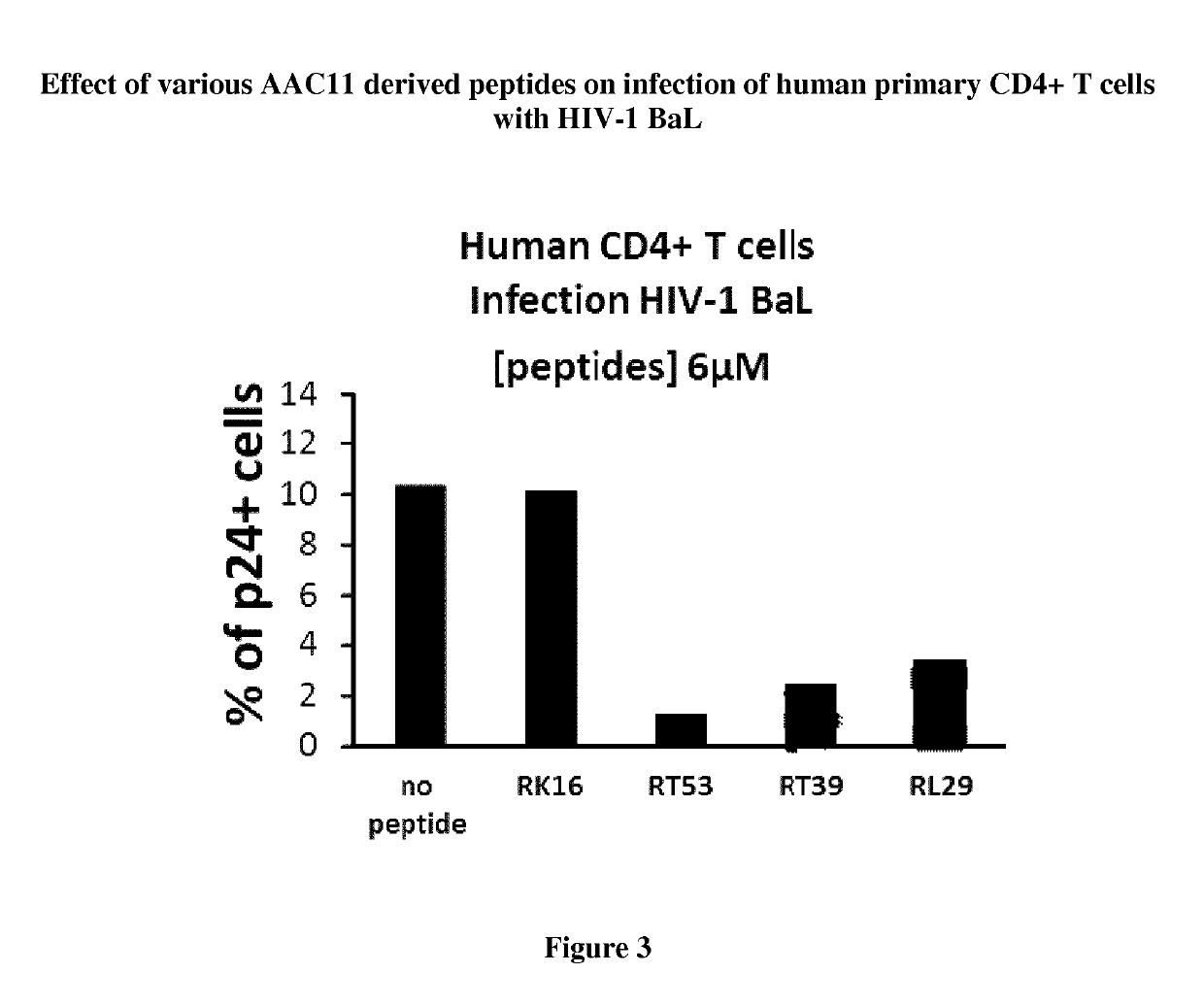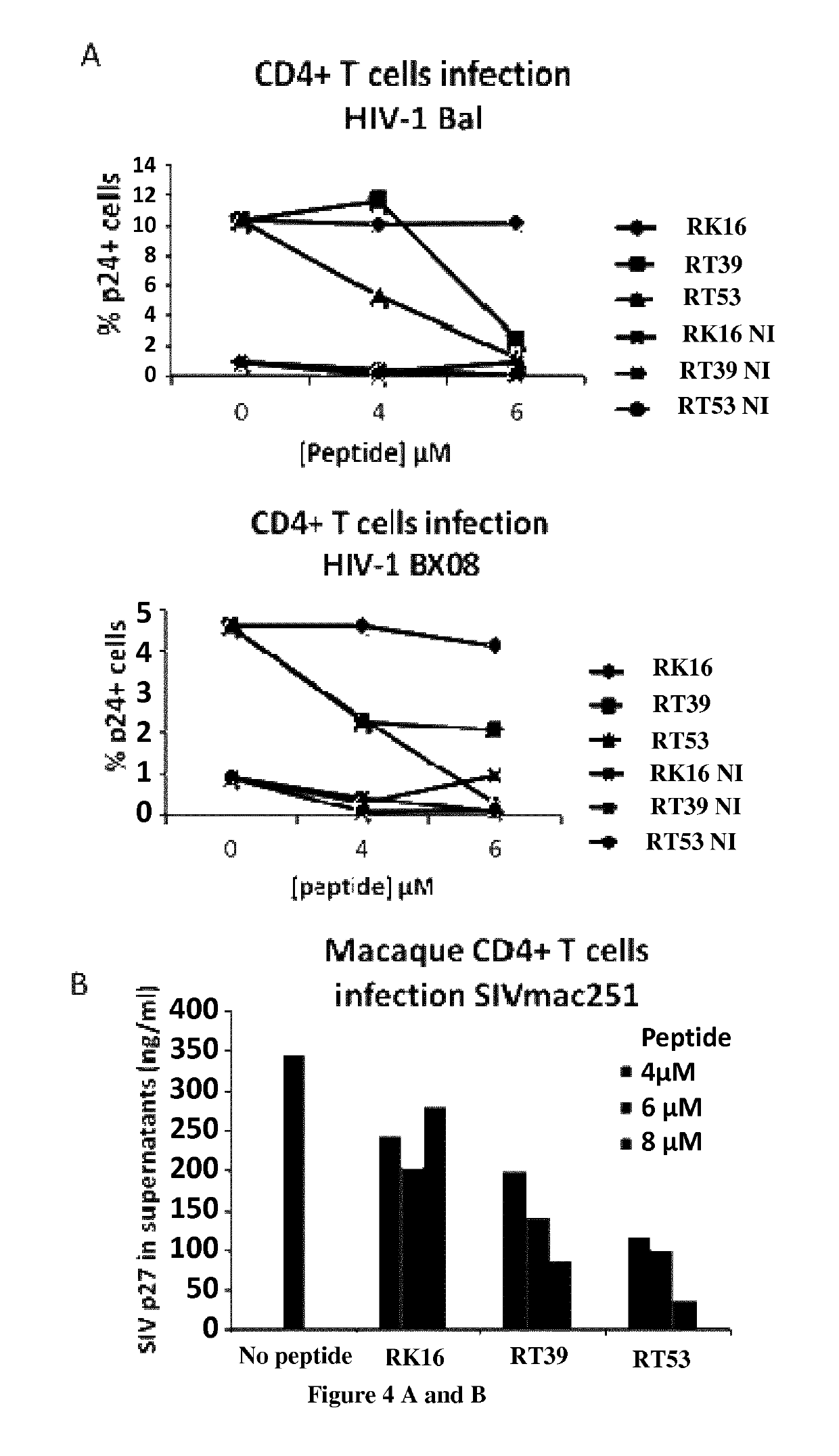Use of AAC-11 inhibitors for the treatment of viral infection
a technology of aac-11 and inhibitors, which is applied in the direction of antivirals, pharmaceutical active ingredients, peptide/protein ingredients, etc., can solve the problems of increased adverse effects, antiviral drugs may encounter resistance problems, and cannot eradicate the infection from the organism
- Summary
- Abstract
- Description
- Claims
- Application Information
AI Technical Summary
Benefits of technology
Problems solved by technology
Method used
Image
Examples
example
[0137]Material & Methods
[0138]Peptides Design and Synthesis
[0139]The inventors have designed peptides that encompass the leucine-zipper (LZ) domain of AAC-11 (residues 363-399). Furthermore, we have designed peptides that have the leucine residues (position 377, 384 and 391, AAC-11 numbering) mutated to glycine to determine if this will still be effective against viral infection. Peptides (>95% pure) were synthesized by Proteogenics Strasbourg-France. Peptides used here were modified by N-terminal acetylation and C-terminal amidation. Peptides were diluted at a concentration of 1 mM in H2O and kept frozen at −70° C. The peptide RT53 corresponds to residues 363 to 399 of AAC-11 fused at the N-terminus with the penetratin sequence. The peptide RT39 corresponds to residues 377 to 399 of AAC-11 fused at the N-terminus with the penetratin sequence. The peptide RL29 corresponds to residues 379 to 391 of AAC-11 fused at the N-terminus with the penetratin sequence. The sequences of used pep...
PUM
| Property | Measurement | Unit |
|---|---|---|
| cellular stress responses | aaaaa | aaaaa |
| stress responses | aaaaa | aaaaa |
| stress-response | aaaaa | aaaaa |
Abstract
Description
Claims
Application Information
 Login to View More
Login to View More - R&D
- Intellectual Property
- Life Sciences
- Materials
- Tech Scout
- Unparalleled Data Quality
- Higher Quality Content
- 60% Fewer Hallucinations
Browse by: Latest US Patents, China's latest patents, Technical Efficacy Thesaurus, Application Domain, Technology Topic, Popular Technical Reports.
© 2025 PatSnap. All rights reserved.Legal|Privacy policy|Modern Slavery Act Transparency Statement|Sitemap|About US| Contact US: help@patsnap.com



